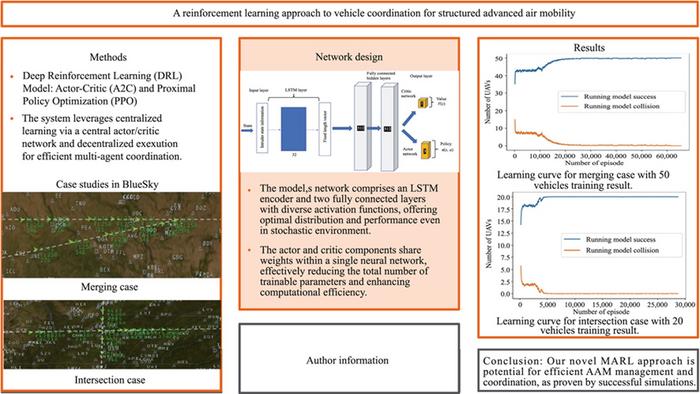A new study from China has introduced an innovative solution to transform air transportation in an era marked by rapid urban expansion and escalating traffic congestion. The research, focused on Advanced Air Mobility (AAM), showcases a novel multi-agent reinforcement learning (MARL) approach to effectively manage the growing demand for air mobility, particularly in densely populated urban areas.
AAM is at the forefront of modern transportation solutions, aiming to enhance the efficiency and environmental viability of urban airspace. By utilizing new aircraft designs and cutting-edge flight technologies, AAM proposes a highly automated, safe, and efficient method of transporting people and cargo across urban, suburban, and rural areas at low altitudes.
Addressing the Challenges of Vehicle Coordination in Structured Airspace
The latest study, conducted by a dedicated team at the University of Tennessee, Knoxville, tackles one of the most challenging aspects of AAM: vehicle coordination at critical merging points and intersections in structured airspace. The proposed MARL framework enables autonomous traffic management, ensuring safe and efficient navigation through these complex airspaces.

With urban areas facing increasing air traffic, traditional air traffic control systems, which rely heavily on human controllers, are becoming inadequate. The research introduces an intelligent system where AAM vehicles are guided by sophisticated algorithms capable of making real-time, strategic decisions. This system not only enhances safety by preventing potential in-air conflicts but also significantly reduces travel times and mitigates traffic congestion.
Deep Reinforcement Learning Approach Enables Seamless Vehicle Coordination
The cornerstone of the study is its deep reinforcement learning approach, which allows each AAM vehicle to operate independently while coordinating seamlessly with others. Through extensive simulations using the BlueSky air traffic control simulation environment, the researchers demonstrated the effectiveness of their model. These simulations integrated real-world data to provide a robust evaluation, highlighting the system’s capability to handle high-density traffic scenarios safely and efficiently.
Furthermore, the study reveals that implementing such advanced systems can lead to a major shift in urban transportation dynamics. By reducing reliance on ground traffic and promoting a shift to the skies, AAM offers a dual benefit: easing city-level traffic congestion and contributing to a reduction in urban air pollution.
“This research not only charts a course for future urban air mobility but also sets a benchmark for the integration of artificial intelligence in managing complex transportation systems. As cities continue to grow and the demand for efficient transportation solutions increases, the insights from this study will be invaluable in guiding the development of sustainable, efficient, and safe urban air mobility systems,” according to the researchers.


